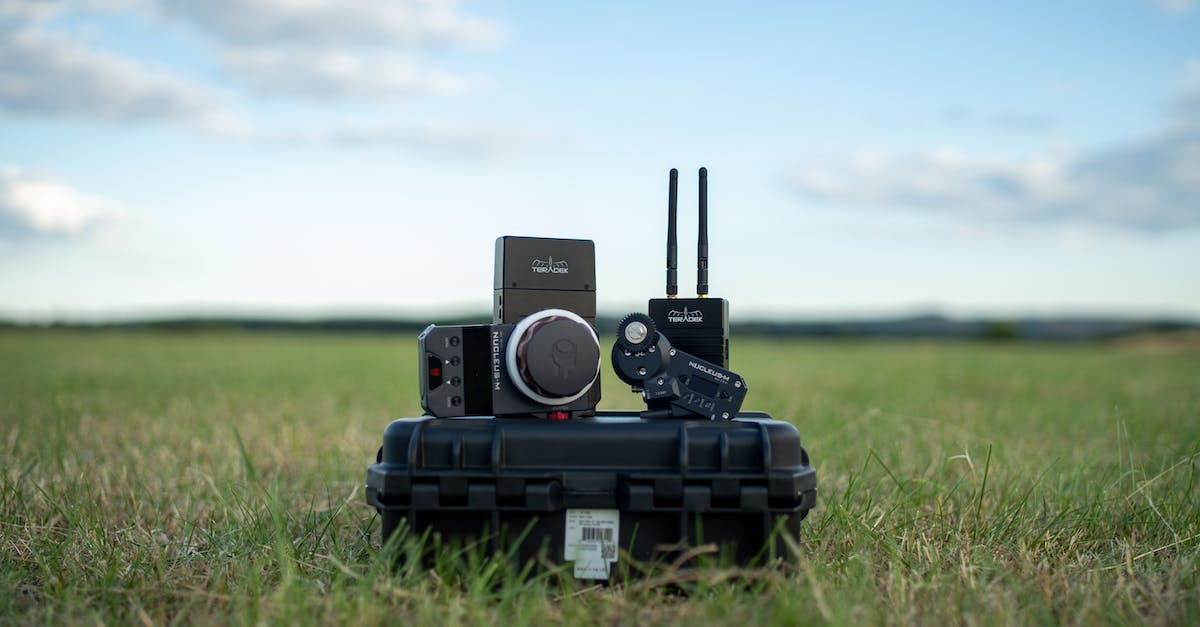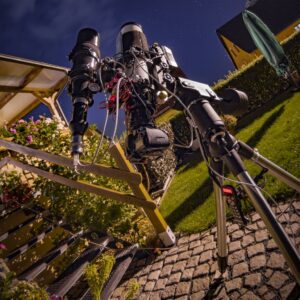This site contains affiliate links to products. I may receive a commission for purchases made through these links.
If you’re like me, there’s nothing quite like looking up at the night sky. The stars, the planets, the moon – it’s all so vast and mysterious. But to really get a good look at what’s out there, you’ll need the right gear.
Choosing the best stargazing equipment can be a daunting task. There’s a wide variety of telescopes, binoculars, and other tools available. It’s important to know what you’re looking for, and what each piece of equipment can offer.
In this article, I’ll guide you through the process of selecting your stargazing gear. From understanding the basics of telescopes to exploring the beyond, we’ll cover it all. So, let’s get started and bring the cosmos a little closer to home.
Understanding Telescopes
Diving into the realm of stargazing begins with understanding the fundamentals of our central tool: the telescope. Telescopes allow us to peer into the cosmos, transporting our minds far beyond the limits of naked-eye observation. But how do you choose one that’s right for you? Let me guide you through some basics.
Telescopes come in various shapes and sizes, each with its unique features and benefits. They’re primarily classified into three types: Refractor, Reflector, and Compound (or Catadioptric) telescopes.
- Refractor Telescopes use lenses to bend (or refract) light. These types of telescopes are known for producing sharp, high-contrast views, making them an excellent choice for viewing the moon, planets, and double stars. On the downside, they tend to be more expensive and less portable due to their bulky size.
- Reflector Telescopes, meanwhile, utilize mirrors to bounce (or reflect) light. These deliver broad views of deep-sky objects, such as nebulae, galaxies, and star clusters. An undeniable advantage is they offer a large aperture at a relatively lower price. However, they may require frequent maintenance and adjustment to achieve the best views.
- Compound Telescopes combine the lens and mirror systems, promising the benefits of both worlds. They’re versatile and are equally effective when observing bright, distant galaxies or nearby objects. They’re more compact and portable than their counterparts, but the cost can be high for quality models.
The table below summarizes the key attributes of each telescope type.
| Type | Best For | Maintenance | Cost |
|---|---|---|---|
| Refractor | Planetary viewing, high-contrast images | Lower | Higher |
| Reflector | Deep-sky viewing, large aperture | Higher | Lower |
| Compound | Versatility, both planetary and deep-sky viewing | Lower | Varies |
Choosing a telescope isn’t just about the type. You’ll also need to consider other factors such as aperture size, focal length, mount type, and extra features like electronic controls and GPS. As we journey through this guide, I’ll help you understand these factors in depth, so stay tuned.
Choosing the Right Telescope for Stargazing
So, we’ve covered the basic types of telescopes and their functions. That takes us to the next big question: how do you choose the right telescope for stargazing? Honestly, it’s not just about the telescope type, but considering a whole range of factors that can significantly impact your stargazing experience.
First and foremost, let’s talk about aperture size. It’s simply the diameter of your telescope’s main lens or mirror. A larger aperture scoops up more light, allowing you to see fainter objects and finer details. But bigger isn’t always better, as large apertures tend to come with bulkier, heavier telescopes. Make sure you’re comfortable with its portability and handling.
Next, we have the focal length. If you’re into capturing wide-field sky vistas, you might prefer shorter focal lengths for a larger field of view. But if planetary close-ups are your goal, a telescope with a longer focal length will be your best friend. It’s important to note that you can modify your field of view with different eyepieces.
Choosing a mount is another critical aspect. With two main types – the simple Altazimuth and the more complex Equatorial – your choice depends on what you want to observe and how you plan to use your telescope. Equatorial mounts, while harder to set up, let you track celestial objects more efficiently.
Last but not least, don’t overlook extra features. Look for accessories like erecting eyepieces for terrestrial viewing, motor drives for automatic tracking, or even built-in cameras for astrophotography. These extras can enrich your stargazing experience, but remember they add to the overall cost.
Exploring Different Types of Telescopes
Now that we’ve covered the basics, let’s delve into the different types of telescopes for stargazing. This crucial aspect of selecting your gear will mainly depend on what you want to see and how detailed you’d like your observations to be.
First off are Refractor Telescopes. They’re designed with a large lens at the front. It’s this lens that gathers light and directs it towards the back of the tube where the eyepiece is located. Besides their rugged durability, these scopes provide some of the best star gazing experiences. Their sturdy design holds up pretty well even in rough conditions. However, they tend to be heavier and more expensive than other types.
Next, we have Reflector Telescopes. These come with a large mirror in place of a lens. The mirror gathers light and reflects it to a secondary mirror which in turn directs it towards the eyepiece. This type is great for viewing faint celestial objects like nebulae and galaxies. Look to reflector telescopes for excellent value for money. Be aware, though, that their mirrors can misalign over time and may require frequent adjustments.
Finally, there’s Catadioptric or Compound Telescopes. These use a combination of lenses and mirrors to fold the optics and form an image. They’re incredibly versatile and perfect for observing a variety of celestial and terrestrial objects. Their lightweight and portable design make them a favorite among travelers and amateur astronomers. Here, the downside might be the higher price tag, as these are usually more expensive than both refractor and reflector scopes.
With all that said, remember: the perfect telescope for stargazing doesn’t exist. It all depends on your personal preferences, budget, and what you’re hoping to see. So, take those details into account, and you’ll find the right equipment for unforgettable stargazing experiences.
Factors to Consider when Buying a Telescope
When choosing the right telescope for your stargazing needs, it’s key to keep a few considerations in mind. The telescope model and type, as discussed in the previous section, play a big part. But there’s much more to the story. We also have to think about things like budget, the telescope’s aperture size, the kind of celestial bodies you’re keen on observing, and the place where you’ll be using it.
Budget is undeniably a huge factor. Telescopes can range from a few hundred dollars all the way up to thousands. Consider your budget range before going further into specifics.
The aperture size, or the diameter of the lens or mirror that gathers light, is very critical in determining the power of a telescope. The bigger the aperture size is, the more light the telescope can gather, which means a brighter and clearer image.
Consider the type of celestial bodies you’re eager to observe. As highlighted in the previous section, some telescopes may be better suited for planetary viewing, while others might excel in capturing the magnificence of faint celestial objects like galaxies and nebulae.
Lastly, think about where you’ll mostly be using your telescope. If you’re located in a city location with a high amount of light pollution, you may need a more robust scope than if you regularly have access to dark, rural skies.
Let’s break this down into an easy-to-understand table.
| Factors to Consider | Importance |
|---|---|
| Budget | Ensure the price range is affordable and represents good value for money |
| Aperture Size | Determines the telescope’s light gathering capability and image brightness |
| Celestial Bodies of Interest | Determines the type of telescope to be chosen |
| Location | The level of light pollution can influence the choice of telescope |
Beyond Telescopes: Other Essential Stargazing Gear
After firming up your decision on the best telescope for your specific needs, it’s time to venture into the other necessary gear to enhance your stargazing experience. The telescope might be a pivotal piece of equipment, but several other items can elevate your observations to a whole new level.
One crucial consideration is Binoculars. You might be wondering, “Why would I need binoculars if I already have a telescope?” Well, for starters, they’re more portable and user-friendly. They can be a great asset for quick or spontaneous stargazing sessions. Moreover, binoculars can provide a wider field of view, making them excellent for spotting larger celestial bodies such as constellations, star clusters, and large nebulae.
Next up on the list is Stargazing Apps. This era’s technology can be a compatriot in your celestial explorations. Highly-rated apps like Star Walk, SkySafari, and Stellarium can guide you around the night sky. You could identify constellations, track satellites, get updates on celestial events, and much more with just a few taps on your screen.
Don’t overlook Star Charts and Planispheres either. Even with technology at our disposal, some traditional tools remain incredibly useful. Star charts and planispheres, physical or printable maps of the stars, can help you familiarize yourself with the constellations and their seasonal appearances.
Lastly, remember to invest in a comfortable Observation Chair. Stargazing might require long hours of looking up at the sky, and a good chair can make that experience more pleasant.
Here’s a simple summary table to help:
| Gear | Importance |
|---|---|
| Binoculars | Wide field of view, portable |
| Stargazing Apps | Identification of constellations, tracking of satellites |
| Star Charts & Planispheres | Understanding constellations and their seasonal changes |
| Observation Chair | Comfort during long observation sessions |
So there you have it – while your telescope will be your primary tool for stargazing, adding these other pieces of gear can considerably enrich your experience under the stars. But remember, every stargazer’s toolkit can be unique – what’s crucial is finding the equipment that best meets your needs and enhances your explorations of the ever-intriguing night sky.
Conclusion
So, you’ve got your sights set on the stars. It’s clear that your telescope is just the start of your stargazing gear. Binoculars can offer a different perspective, while apps, star charts, and planispheres will guide your night sky exploration. Don’t forget the comfort of an observation chair for those longer sessions. Remember, it’s all about enhancing your experience and finding what works best for you. Now, with your gear in hand, it’s time to gaze up and lose yourself in the cosmic spectacle above. Happy stargazing!
Frequently Asked Questions
What is the role of binoculars in stargazing?
Binoculars are great for stargazing because of their portability and wider field of view. They allow you to observe larger areas of the night sky and are easy to carry around.
Why should I use stargazing apps?
Stargazing apps help you to identify constellations and track satellites. They are good tools for beginners and facilitate a deeper understanding of the night sky.
Are star charts and planispheres useful in stargazing?
Yes, star charts and planispheres are helpful tools for understanding constellations and their seasonal changes. They provide a tangible reference and user-friendly way to navigate the night sky.
Why should I consider an observation chair for stargazing?
An observational chair is essential for comfort during long observation sessions. It can significantly enhance your stargazing experience by reducing physical strain.
How do I choose the right stargazing equipment?
The right equipment for stargazing depends on your individual needs and preferences. Choose tools that enhance your understanding and comfort during observation sessions to have the best stargazing experience.



